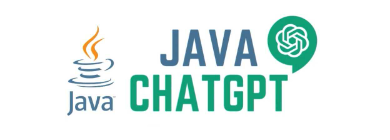Stocks to buy: Invest in companies that have reduced debt; 5 stocks with up to 29% upside potential There are 530 non-financial companies (with market cap of more than Rs.100 crore) that reduced their total debt by more than 20% in the last financial year. The group of these 530 companies delivered an average return of 109.4%. Out of the 530 stocks, over 58.4%, or 310 stocks, delivered returns higher than the Nifty 500 index in the past year. The data is based on 9 September 2024 closing values. The following are five such stocks that have been covered by a decent number of analysts and are currently offering a double-digit share price potential
The tepid performance in the first quarter of 2024-25 has impacted corporate India’s debt servicing ability. The moderation in profit growth has led to a marginal decline in interest coverage ratio (ICR) for most sectors in the June 2024 quarter, compared to the June 2023 quarter, according to an earnings review report by Bank of Baroda.Though the ICR was comfortable despite moderation, the higher base effect is likely to keep profit growth under pressure. This is distressing as profits are the main driver of the debt servicing ratio. ICR measures a company’s debt servicing capability and indicates whether the company is making enough profits to meet its interest liabilities.
Moreover, the sectors that contributed significantly to top line or revenue growth in 2023-24 saw a slowdown in the June quarter. These sectors included automobiles, consumer services, airlines, industrials and cement. “The demand slowdown is a sign of worry,” states the Nuvama report.
Looking at the debt profile of India Inc., the aggregate total debt (long term and short term) of 2,300 nonfinancial companies (with market cap greater than Rs.100 crore) stood at Rs.46.3 lakh crore at the end of 2023-24 and grew at 3.96% year-on-year (y-o-y), according to the data compiled from Reuters-Refinitiv. In absolute terms,Reliance Industries, Vodafone Idea, NTPC, Bharti Airtel and ONGC were the biggest five companies in terms of total debt in 2023-24. Energy, utilities and industrials were among the sectors with the most total debt in 2023-24. In terms of growth, construction materials, real estate and chemicals were among the sectors that saw the most y-o-y growth in total debt between 2022-23 and 2023-24. While the key equity market benchmarks continue to climb, experts are advising caution due to the emerging headwinds.
Mixed global signals, amid the uncertainty of outcome in the US presidential polls, weak US manufacturing data and declining oil prices could contribute to the increased global volatility. The domestic markets are also not free from concerns. Moderation in the June quarter GDP growth, decline in auto sales and elevated valuations are some of the factors that could negatively impact sentiments. The valuations of the Indian equity markets are the highest among the key global benchmarks. While the Nifty 50 index trades at a 12-month forward PE of 22.1 times, the forward PEs of European markets, including the UK, Germany, France, Netherlands and Switzerland trade between 12-18.5 times. The Asian market benchmarks of China, Japan and HongKong are trading at valuations between 10.8-14.1 times, as per the Reuters-Refinitiv data.
The higher valuations are also putting the FPI inflows at risk. Though the FPI inflows have improved in September after a significant moderation in August, experts anticipate flows to intensify (after the Fed rate cut) towards markets where valuations are more appealing. The high valuations may deter India from being a meaningful beneficiary of such inflows.
Given the profitability headwinds in the near future, it is better to consider companies that have strengthened or deleveraged their balance sheets. Deleveraging helps in reducing interest costs and improving financial ratios.
We tried to identify companies that have reduced their consolidated total debt in 2023-24 compared to 2022-23. There are 530 non-financial companies (with market cap of more than Rs.100 crore) that reduced their total debt by more than 20% in the last financial year. The group of these 530 companies delivered an average return of 109.4%. Comparatively, the Nifty 500 index has delivered 34.4% return in the past year.
Out of the 530 stocks, over 58.4%, or 310 stocks, delivered returns higher than the Nifty 500 index in the past year. The data is based on 9 September 2024 closing values.
The following are five such stocks that have been covered by a decent number of analysts and are currently offering a double-digit share price potential.
HG INFRA ENGINEERING
THE INFRASTRUCTURE CONSTRUCTION company reduced its consolidated debt by 20.8% y-o-y in 2023-24. It has maintained a strong financial health, with a credit rating of ICRA AA-(positive)/ ICRA A1+ for long-term and short-term credit facilities, respectively.

Its order book of Rs.15,600 crore provides strong revenue visibility. In the June quarter, both standalone revenue and PAT grew by 18% y-o-y. The management has guided 18-20% revenue growth and stable EBITDA margins at around 16% for 2024-25. The order book is diversified, with roads, railways/ metro and solar projects. It expects strong order inflows in 2024-25, with an increase in the share of non-road projects. Currently, roads constitute 63% of the order book. The company is also trying to explore new projects in the water segment in Jal Jeevan Mission.

It will be a beneficiary of growth opportunities arising from public-private partnerships, increased motor vehicle penetration, high-speed freight corridors and a growing focus on increasing the renewable energy share in the total energy mix. A recent Axis Securities report is bullish on the company and expects the growth momentum to sustain, led by a strong order book position, better order intake, diversification in related sectors and government’s infrastructure thrust.

BEML
THE HEAVY EQUIPMENT manufacturer reduced its consolidated debt by 81.4% y-o-y in 2023-24. Its strong client base, comprising major government organisations and robust in-house R&D, are the key strongholds. It reported a decent performance in the June 2024 quarter, with a 9.9% y-o-y jump in the consolidated revenue. The net loss was narrowed, compared to the corresponding period in the previous year, aided by a fall in interest costs and deferred taxes.

Though the order inflow declined during the quarter due to the elections’ impact, the overall order book is healthy at Rs.1,1810 crore, which provides a good revenue visibility. The management has reiterated its 20% revenue guidance and expects the order book to reach Rs.20,000-30,000 crore at the end of 2024-25. Major orders are expected in the railways and metro segments, and the management is also anticipating orders from the defence segment over the next five years.

A Prabhudas Lilladhar report, released after the June quarter results, states that BEML is in a sweet spot to capture long-term growth on the back of healthy order prospects in the modernisation of defence vehicles, expansion in higher value defence segments, such as engines and aerospace, large tender pipeline for metro and Vande Bharat rolling stock and large capacity expansion leading to a ramp-up in execution.

MARUTI SUZUKI
THE AUTOMOBILE MANUFACTURER reduced its total consolidated debt by over 90% y-o-y in 2023-24. Its strong operating performance in 2023-24 resulted in free cash flow of Rs.8,200 crore (after adjusting capex). Comparatively, the company had generated free cash flow of Rs.2,980 crore in 2022-23.

Looking at the June quarter performance, improved volumes and higher UVs (utility vehicles) mix supported standalone revenue, which grew by 10% y-o-y. On the other hand, operating leverage benefits and favourable commodity prices supported EBITDA, which grew by 50.9% y-o-y. The company is increasing UVs in its mix to overcome the slowdown in the entrylevel or small car segment.

It is planning to increase its annual production capacity to 40 lakh units by 2030-31, from the current 20 lakh units. It is also focusing on the diversification of the powertrain mix in battery electric vehicles, hybrid, CNG and biofuels. Analysts list recent launches, brownfield expansion, increased CNG penetration, export opportunities, likely recovery in demand during the upcoming festive season and better product mix as the key growth drivers. A recent Motilal Oswal report expects the company to outperform industry growth over 2023-24 and 2025-26, with a steady 15% earnings CAGR. Further, any GST cut or favourable policy for hybrids by the government may drive a rerating, as Maruti Suzuki would be the key beneficiary.

TITAGARH RAIL SYSTEMS
THE RAILWAY ROLLING stock manufacturer reduced its total consolidated debt by over 53% y-o-y in 2023-24. Its financial risk profile is supported by a healthy net cash accrual of Rs.324 crore in 2023-24, compared to Rs.126 crore in fiscal 2022-23. Substantial debt reduction also resulted in an improvement in the debt to EBITDA ratio of 0.13 times in 2023-24, from 0.95 times in 2022-23. The data is sourced from the Crisil Ratings note.

In the June quarter, the revenue declined by 0.8% y-o-y amid modest execution due to the elections’ impact. Its standalone order book is healthy and stood at Rs.14,117 crore, which provides potential business visibility in the medium term. The Ahmedabad Metro and Vande Bharat orders in 2025-26 are expected to provide traction to the passenger rail systems segment. It has recently commenced production of trainsets for the Bengaluru Metro and has completed the Pune Metro order.

An Antique Stock Broking report, released after the June quarter results, states that the company has created a manufacturing set-up that is difficult to replicate. The recently concluded fund raising, coupled with the expected strong cash-flow generation in the next few years, will support the company.

R R KABEL
THE WIRE AND CABLE MANUFACTURER reduced its total debt by over 38% y-o-y in 2023-24. It has used the proceeds of its public issue for debt repayment and general purposes. The company is funding its capex through internal accruals, which is supporting its credit metrics. In the June quarter, it reported a 13% y-o-y growth in revenue, though both EBITDA and PAT fell by 15.9% and 13.4%, respectively.

Increased expenses, flat export business and higher losses in FMEG impacted the overall performance during the quarter. Going forward, the cable demand is expected to outpace the demand for wires in both domestic and export markets. In the domestic segment, defence, solar and infrastructure sectors will provide growth opportunities.

The management expects over 20% volume growth in the wires and cables segment over the next few years, whereas exports are set to deliver a robust growth in the coming quarters. Its capex plans are on track and include doubling the power cable capacity and expansion of copper wire production.

The FMEG segment is also expected to turn around by 2025-26, aided by new product launches, premiumisation, procurement efficiencies, scale advantages, redistribution system and entry in newer areas, according to an Asian Markets Securities report.
This story originally appeared on: India Times - Author:Faqs of Insurances























































